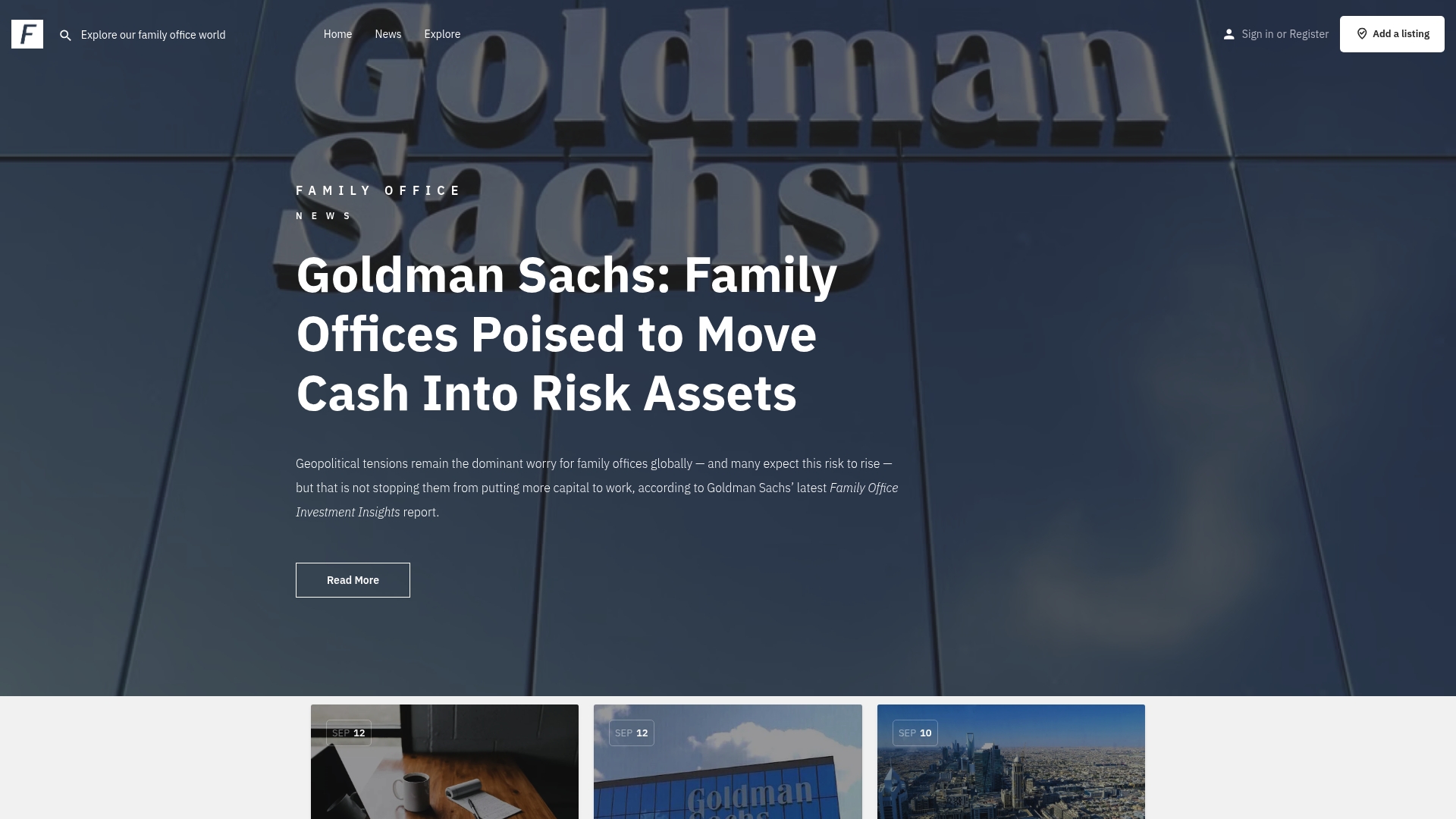Nearly 70 percent of wealthy families lose their wealth by the second generation, with 90 percent losing it by the third. Strong family office governance principles can break this cycle, helping families create order from financial complexity while protecting their legacy. Clear rules, open communication, and strategic planning transform wealth management into a sustainable system, making it possible to guide assets, values, and vision across generations with confidence.
Key Takeaways
| Point | Details |
|---|---|
| Governance Principles | Effective family office governance focuses on transparency, alignment with family values, succession planning, and risk management. |
| Flexible Structures | Various governance structures, including single, multi-family, hybrid, virtual, and embedded offices, can optimize wealth management according to family needs. |
| Defined Roles | Clear definition of roles within the family office ensures effective management, reduces conflicts, and maintains strategic coherence. |
| Sustainability Focus | Sustainable governance integrates family values into investment decisions, driving both financial performance and positive societal impact. |
Table of Contents
- Defining Family Office Governance Principles
- Core Components Of Family Office Governance
- Types Of Family Office Governance Structures
- Roles And Responsibilities In Governance
- Risk Management And Compliance Standards
- Best Practices For Sustainable Governance
Defining Family Office Governance Principles
Family office governance is the strategic framework that transforms complex wealth management into a structured, purposeful system for ultra-high-net-worth families. According to Deutsche Wealth, governance refers to the agreed processes for decision-making, role assignments, and implementing critical changes within a family’s financial ecosystem.
The core principles of family office governance revolve around several key objectives:
- Transparency: Creating clear communication channels and decision-making protocols
- Alignment: Ensuring all financial strategies match the family’s core values and long-term objectives
- Succession Planning: Developing robust mechanisms for generational wealth transfer and leadership continuity
- Risk Management: Implementing comprehensive strategies to protect and preserve family wealth
At its heart, family office governance is about more than just managing money. It’s a holistic approach that balances financial sophistication with family dynamics, recognizing that wealth preservation requires more than spreadsheets and investment portfolios. As Wikipedia notes, these private entities go beyond simple wealth management, encompassing investment strategies, philanthropic initiatives, and administrative structures designed to support intergenerational financial success.
Successful family office governance demands a proactive, adaptive approach. Families must create flexible frameworks that can evolve with changing economic landscapes, technological advancements, and shifting family priorities. This means developing governance models that are simultaneously robust and nimble, capable of protecting accumulated wealth while remaining open to innovative strategies and emerging opportunities.
Core Components of Family Office Governance
Family office governance is built upon a sophisticated framework of structural elements designed to ensure systematic, transparent, and effective wealth management. According to Familiarize, effective governance comprises several critical structural components that transform complex financial operations into streamlined, strategic processes.
The fundamental components of family office governance include:
- Organizational Structures: Establishing clear governance bodies
- Board of Directors
- Advisory Committees
- Family Assemblies
- Policy Frameworks: Developing comprehensive guidelines
- Investment Policy Statements
- Conflict-of-Interest Protocols
- Succession Planning Documentation
As Family Office HQ highlights, key governance practices extend beyond structural elements to include communication protocols and continuous learning. These practices ensure that family members remain aligned, informed, and engaged in the wealth management process. This means creating regular communication channels, implementing feedback mechanisms, and investing in ongoing education to maintain strategic coherence.
Ultimately, successful family office governance is about creating a dynamic ecosystem that balances formal structures with flexible adaptation. It requires thoughtful design of organizational charts, clear role definitions, and robust mechanisms that can evolve with the family’s changing needs, economic shifts, and generational transitions. The goal is not just to manage wealth, but to create a sustainable framework that preserves financial legacy while empowering future generations.

Types of Family Office Governance Structures
Family office governance is not a one-size-fits-all approach, but rather a flexible framework with multiple structural models designed to meet diverse family needs. According to Familiarize, these governance structures range from single-family offices focused on individual family requirements to more complex multi-family office configurations.
The primary governance structure models include:
Here’s a comparison of the main family office governance structure types:
| Structure Type | Core Focus | Key Benefits | Considerations |
|---|---|---|---|
| Single-Family Office | One family’s wealth | Personalized service Full control |
Higher costs Greater privacy |
| Multi-Family Office | Several families collaborating | Shared resources Expertise diversity |
Less personalization |
| Hybrid Model | Mix of individual and shared | Balance of control & scalability | Requires strong governance |
| Virtual Office | Tech-driven coordination | Flexibility Lower overhead |
Reliant on technology |
| Embedded Office | Integrated in family business | Synergy with business Cost sharing |
Potential role conflicts |
- Single-Family Offices: Exclusively dedicated to one family’s comprehensive wealth management
- Multi-Family Offices: Collaborative structures serving multiple families with shared resources
- Hybrid Models: Combining personalized services with shared infrastructure
- Virtual Family Offices: Utilizing technology to coordinate external advisors
- Embedded Family Offices: Integrated within existing family business structures
Asset Vantage highlights that each model differs significantly in terms of oversight, cost management, and strategic alignment. Multi-family offices, for instance, offer economies of scale and broader expertise, while single-family offices provide more personalized, tailored approaches to wealth management.
![]()
Choosing the right governance structure requires careful consideration of the family’s unique financial landscape, complexity of wealth, long-term objectives, and desire for control. Successful implementation means selecting a model that not only manages financial assets effectively but also supports the family’s evolving vision, maintains transparency, and facilitates smooth intergenerational wealth transfer. The ultimate goal is creating a governance framework that feels less like a financial mechanism and more like a strategic partner in the family’s collective financial journey.
Roles and Responsibilities in Governance
Family office governance requires a carefully choreographed ecosystem of specialized roles and responsibilities that work together to manage complex wealth strategies. According to Number Analytics, these roles span multiple critical domains, ensuring comprehensive management of family wealth and strategic objectives.
The key roles in family office governance typically include:
- Family Members: Providing strategic vision and long-term direction
- Family Office Manager: Overseeing daily operations and coordination
- Investment Advisors: Developing and executing sophisticated investment strategies
- Legal Advisors: Ensuring regulatory compliance and legal protection
- Accountants: Managing financial records and fiscal reporting
Family Office HQ emphasizes that successful governance hinges on creating clear organizational structures through mechanisms like advisory boards, family councils, and dedicated committees. These structures aren’t just administrative—they’re critical for preventing potential conflicts, streamlining communication, and ensuring that every stakeholder understands their specific responsibilities and boundaries.
Effective role definition goes beyond traditional job descriptions. It’s about creating a dynamic, transparent ecosystem where each member understands their unique contribution to the family’s collective financial journey. This means developing robust communication protocols, establishing clear decision-making frameworks, and fostering an environment of mutual respect and collaborative strategic planning. The ultimate goal is to transform individual roles into a cohesive, adaptive governance model that can navigate complex financial landscapes while preserving the family’s core values and long-term vision.
Risk Management and Compliance Standards
Risk management forms the critical backbone of family office governance, transforming potential financial vulnerabilities into strategic opportunities. According to ISO 31000:2018, effective risk management requires a comprehensive framework that integrates systematic principles across organizational structures, defining clear policies and governance mechanisms.
Key components of robust risk management in family offices include:
- Financial Risk Assessment: Identifying potential investment vulnerabilities
- Legal Compliance Monitoring: Tracking regulatory changes and requirements
- Cybersecurity Protocols: Protecting sensitive financial information
- Succession Planning: Mitigating risks associated with leadership transitions
- Investment Diversification: Spreading risk across multiple asset classes
The ISO 19600 compliance management guidelines provide a structured approach to developing comprehensive compliance systems through a Plan-Do-Check-Act cycle. This methodology ensures that risk management is not a static process, but a dynamic, continuously improving framework that adapts to changing economic landscapes, technological advancements, and family-specific challenges.
Ultimately, effective risk management in family offices transcends traditional checklist approaches. It requires creating a holistic ecosystem of proactive monitoring, transparent communication, and strategic adaptability. This means developing sophisticated early warning systems, fostering a culture of risk awareness, and implementing flexible governance structures that can quickly respond to emerging financial threats while preserving the family’s long-term wealth preservation objectives.
Best Practices for Sustainable Governance
Sustainable governance represents a transformative approach to family office management that extends beyond traditional financial metrics. According to Family Office HQ, this approach requires a comprehensive strategy that aligns investment decisions with broader family values and long-term societal impact.
Key best practices for sustainable governance include:
- Values Assessment: Systematically mapping family values to investment strategies
- Stakeholder Education: Developing comprehensive understanding of sustainable investing
- Investment Policy Development: Creating detailed frameworks for responsible investment
- Technology Integration: Leveraging advanced tools for ESG tracking and analysis
- Performance Monitoring: Establishing sustainability-focused metrics and benchmarks
Family Office HQ emphasizes that sustainable governance demands ongoing adaptability. This means creating flexible governance models that can evolve with changing economic landscapes, technological advancements, and emerging social responsibilities. The goal is to build an agile ecosystem that doesn’t just preserve wealth, but actively contributes to positive societal and environmental outcomes.
Ultimately, sustainable governance is about reimagining the family office as a strategic platform for holistic wealth management. It requires a forward-thinking approach that balances financial performance with broader impact, leverages cutting-edge technology, and maintains a long-term perspective that extends beyond immediate financial returns. By embedding social responsibility into core governance frameworks, family offices can create lasting value that transcends traditional wealth preservation strategies.
Transform Your Family Office Governance With Community-Driven Solutions
Navigating the complexities of family office governance often brings up tough questions about transparency, risk management, and ensuring your legacy stays aligned with your family’s core values. If you are struggling to keep decision-making clear, manage succession planning, or adapt as new challenges arise, you are not alone. Many ultra-high-net-worth families find it difficult to balance evolving governance frameworks with the need for trusted resources and real-time industry knowledge.

Discover how you can break through isolation and uncertainty with Future Family Office. Instantly connect to a global network of peers, access exclusive news on governance best practices, and tap into expert resources like service provider listings and in-depth articles. Build your profile, list your family office or service, and engage with a transparent, standardized platform built for sustained success. Do not wait to futureproof your governance model. Visit Future Family Office today and take the next step toward building a resilient legacy.
Frequently Asked Questions
What is family office governance?
Family office governance refers to the strategic framework guiding decision-making, role assignments, and critical changes within a family’s financial ecosystem. It ensures effective management and coordination of wealth across generations.
What are the core principles of family office governance?
The core principles include transparency, alignment with family values, succession planning for wealth transfer, and risk management to protect family assets.
What types of family office governance structures exist?
Common governance structures include single-family offices, multi-family offices, hybrid models, virtual offices, and embedded offices, each tailored to different family needs and management styles.
What roles are essential in family office governance?
Key roles typically include family members for strategic vision, a family office manager for daily operations, investment and legal advisors for financial strategies, and accountants for fiscal management.
Recommended
- Randel Carlock: Family Businesses or Family Enterprises? – Future Family Office
- The Future Of Philanthropy in Family Offices – Future Family Office
- How can we Prepare the Now Generation of Family Business? – Future Family Office
- How can we Prepare the Now Generation of Family Business? – Future Family Office




